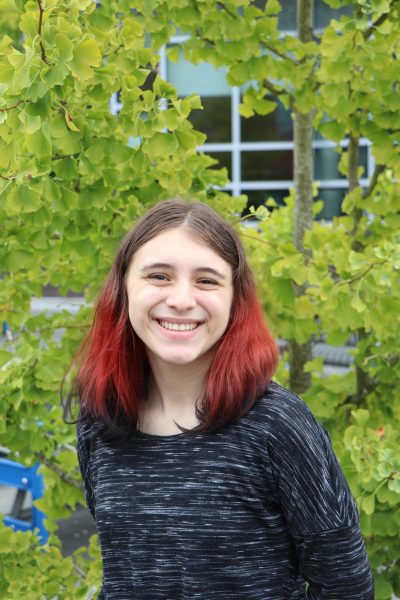Shorewood’s appropriation of the Thunderbird
The use of Native American culture and figures as mascots is not new, but should we allow it to continue at our school?
April 1, 2021
Depictions of Native American figures, symbols, and cultural attributes are frequently used as mascots for many popular American sports teams. Rising vocal criticism for these depictions have made several teams change them. This conversation was first popularized by widespread critique of the use of stereotypical Indigenous mascots in nationally recognized sports teams. Controversy has now broken into smaller communities such as our own.
The Thunderbird, which has been Shorewood’s mascot for several years, has created a divide between students, staff, and teachers. Due to rising awareness and sensitivity to racism, this discussion has prompted varying responses from different people. Many BIPOC (Black, Indigenous, People of Color) individuals, such as myself, believe the use of the Thunderbird as the mascot of Shorewood High School, a predominantly white school, to be inappropriate and a form of cultural appropriation.
Nadra Kareem Nittle, writer for ThoughtCo. defines cultural appropriation as “the adoption of certain elements from another culture without the [explicit] consent of people who belong to the culture.” In the United States of America, the white majority tends to “borrow” cultural aspects of marginalized groups, most commonly BIPOC communities.
In the past, this “borrowing” was often done with the belief that BIPOC communities and individuals were of less value than their white counterparts. It also encouraged white entitlement and aided the idea that BIPOC people and culture existed to be exploited and used by white people. This trend of borrowing still prevails in modern culture, as we see more and more attributes of marginalized communities being adopted and credited to the white majority. Some examples of this would be the use of stereotypes of cultures and groups of people in Halloween costumes, the use of traditionally African American hairstyles by non-African people, and the casual and incorrect use of meaningful ideas of cultures such as the culturally Native American term “spirit animal.”
Erasure and white washing contributes to the perpetuation of harmful and degrading stereotypes. Associating typically BIPOC figures and culture with whiteness not only perpetuates the idea that BIPOC people are incapable of intelligence and ingenuity, but also strips culture of its deeper meaning and significance. While you may believe your intent to be respectful and kind, emphasis should be placed less on intent and more on impact.
So I must take this time to ask administrative staff and the rest of Shorewood: Why is our mascot the Thunderbird? Are we paying homage? Are we paying homage well? It is easy to claim cultural appreciation when taking and using cultural aspects of BIPOC communities. However, it is very often the case that this “appreciation” lacks the depth and nuance of true understanding. It is very often diluted and unjustified in its depictions and used much in the way the Thunderbird is. It takes more than slight attempts at cultural recognition to claim allyship and appreciation.
I implore you to ask your Indigenous friends and peers and our Indigenous communities for their thoughts. Their opinion on this matter will always matter more than my own.
Xanni Brown, psychology doctoral student at Yale and researcher of Native American stereotypical images and their harm, stated in the article “When the School Mascot Is a Native American Stereotype” done by Yale Insight that, “[The use of Native American Mascots] has also shown that it can increase stereotyping of Native American students by other racial groups. And [that] there’s even a little bit of evidence to suggest that it can increase stereotyping of racial groups broadly.”
All in all, I think that the rising concern over the potential harm the use of the Thunderbird may cause is reason enough to stop using it as the mascot. Continuing to use the Thunderbird as the mascot after students, especially students of color and most importantly Indigenous students, have voiced their dislike and disagreement is insensitive. Creating an environment where BIPOC people feel safe and heard is an important step in becoming a better school and community.
Change, however, must first be brought by us, the newspaper. That is why I also ask The Kolus, named after the younger brother of the Thunderbird, to select a different name, in the hopes of encouraging changes to be made to our school mascot with the end goal of creating a safer and healthier environment for all people.


